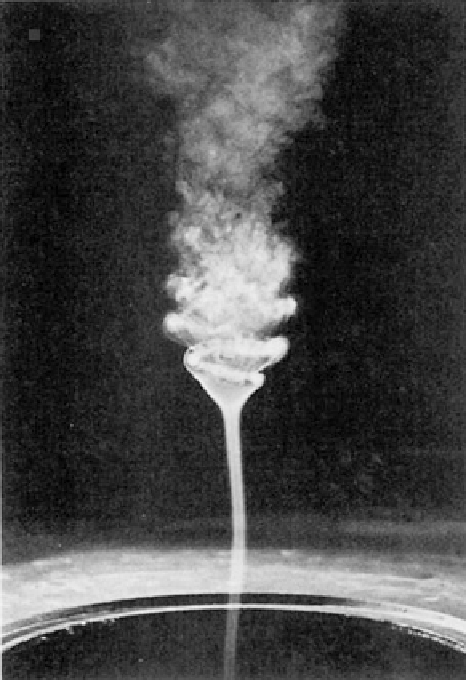Geoscience Reference
In-Depth Information
Figure 6.54. An example of vortex breakdown in a laboratory vortex as a transition from a
narrow, laminar rotating column below to a wider, turbulent column aloft (from Church et al.,
1979).
classic 1962 paper showed is analogous ( just turn his setup onto its side by rotat-
ing it so that it is horizontally oriented rather than vertically oriented and gravity
waves are substituted for centrifugal waves) to the ''hydraulic jump'' observed in
non-rotating, stratified flows when there is a transition from upstream supercritical
flow (in this case the flow speed is faster than that of gravity waves) to subcritical
flow (the flow speed is slower than that of gravity waves). When there is vortex
breakdown, there is a transition from laminar (below) to turbulent (above) flow
(
Figure 6.54
). Air parcels accelerating upward in the jet suddenly encounter much
weaker flow and the zone of upward motion becomes wider, much weaker, and
turbulent. Rich Rotunno at NCAR was the first to analyze simulations of
tornado-like vortices and show that vortex breakdown can occur.
One may interpret vortex breakdown as a consequence of the requirement of a
match between the ''flow force'' or ''head'' just below the top of the jet and that
just above the jet. In other words, there must be a ''match'' between the vortex

Search WWH ::

Custom Search